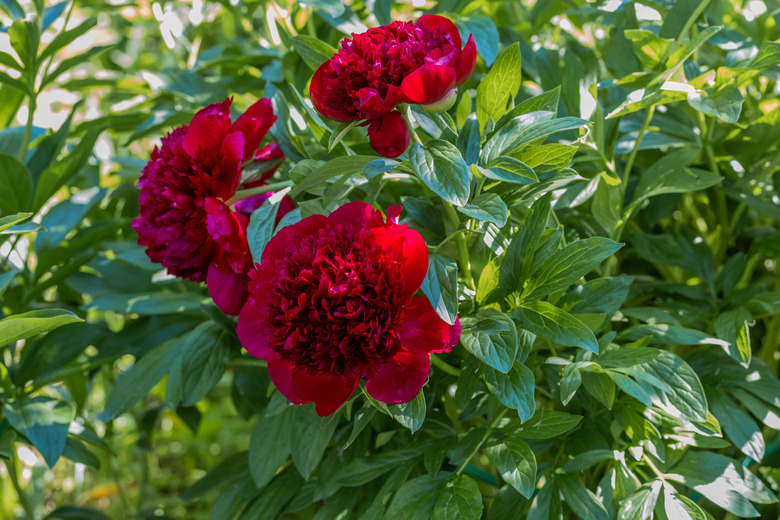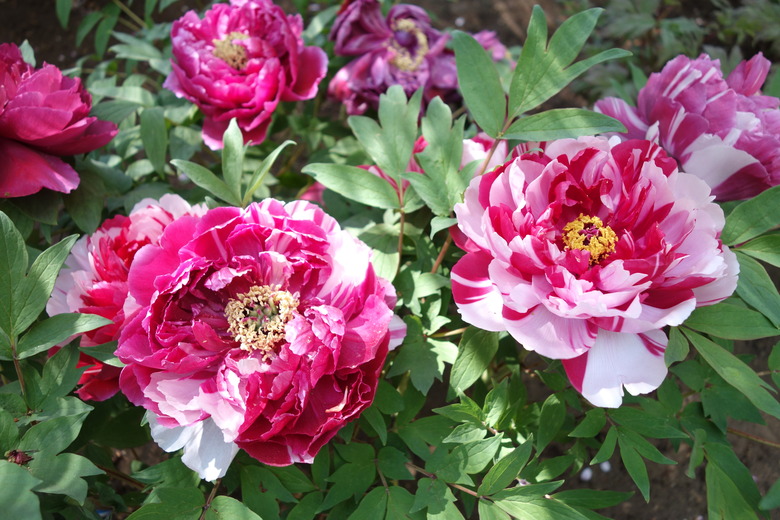How To Transplant Peonies In The Spring
Although the best time to transplant peonies (Paeonia spp., USDA zones 3 to 8) is in fall, you may find yourself needing to move these plants at a different time of year. Because peonies live for decades, you'll likely want to dig up a treasured plant if you're moving to another home, which may be in springtime.
You may also need to transplant a peony in spring, for example, if you're installing hardscaping over its growing site.
Tip
Transplanting peonies in spring is possible, but new transplants need a little more after-care than fall-transplanted ones.
Why Fall Is the Best Time to Transplant Peonies
The reason fall is best for transplanting a peony is that this is the time of year when plants are getting ready to enter their dormant period. During dormancy, roots continue to grow but water and nutrient needs are reduced.
This causes peonies to suffer less transplant stress in fall than plants that are breaking their dormancy in spring and needing more energy to flush new foliage and produce flowers for the growing season.
Before Transplanting Peonies in Spring
Choosing a suitable site as the new home for your peony is an important decision even before you dig your plant. Choose a full-sun location (at least six hours daily) with well-draining soil that's loose and crumbly due to high organic matter content. Clear the site of all weeds and remove rocks.
**Another important consideration is good circulation,** which means plants aren't crowded or planted too close to a wall or other structure that can impede air flow. If you're transplanting more than one peony, space plants 18 inches apart.
How to Transplant Peonies in Spring
Moving peonies in spring follows the same procedure for digging, dividing and transplanting peonies in fall with a few tweaks in post-transplant care.
- Loosen the soil at the new location to a depth of 18 inches
deep and 24 inches wide.
- Carefully dig around your peony plant, far enough away from
the crown to remove the root system.
- Lift the plant with a shovel or garden fork, and place it on
the ground beside the excavated hole.
- If you want to divide your peony, rinse all the soil from
around the roots and divide the crown into wedges using a sharp knife wiped with alcohol. Dust the cut surfaces with a fungicide. Each wedge should have at least three to five "eyes," which are the white or pink buds that develop into shoots. (Depending on the time in spring you're transplanting a peony, you may already see shoots instead of buds.) If your peony is a young plant, you may want to transplant it intact without dividing it.
- Place each plant or division into a hole on the new planting
site so that the crown is only 1 or 2 inches below the soil.
- Thoroughly water the plant or divisions to settle the soil
around the roots.
After Transplanting Peonies in Spring
When transplanting peonies in springtime, plants are getting ready to sail into the heat of summer without the benefit of having become established during the dormant season. This means that spring transplants suffer more transplant stress than fall transplants.
To help offset this stress, be sure to keep plants watered well. At least 1 inch of water in spring helps root and shoot establishment, and you may need to water twice weekly during the heat of summer the first year after transplanting.
Tip
Even peonies transplanted in fall may take a couple of years to bloom. Spring transplants will also take this long, or longer, before they reward you with flowers.
Stake plants so that the growing foliage doesn't cause plants to fall over from roots that aren't firmly in place from spring transplanting.
In late fall, cover plants with 4 to 6 inches of organic mulch. This helps peonies, especially in cold climates, from "heaving," which can push them out of the ground from freeze-and-thaw cycles during winter. Be sure to remove the mulch in spring.

